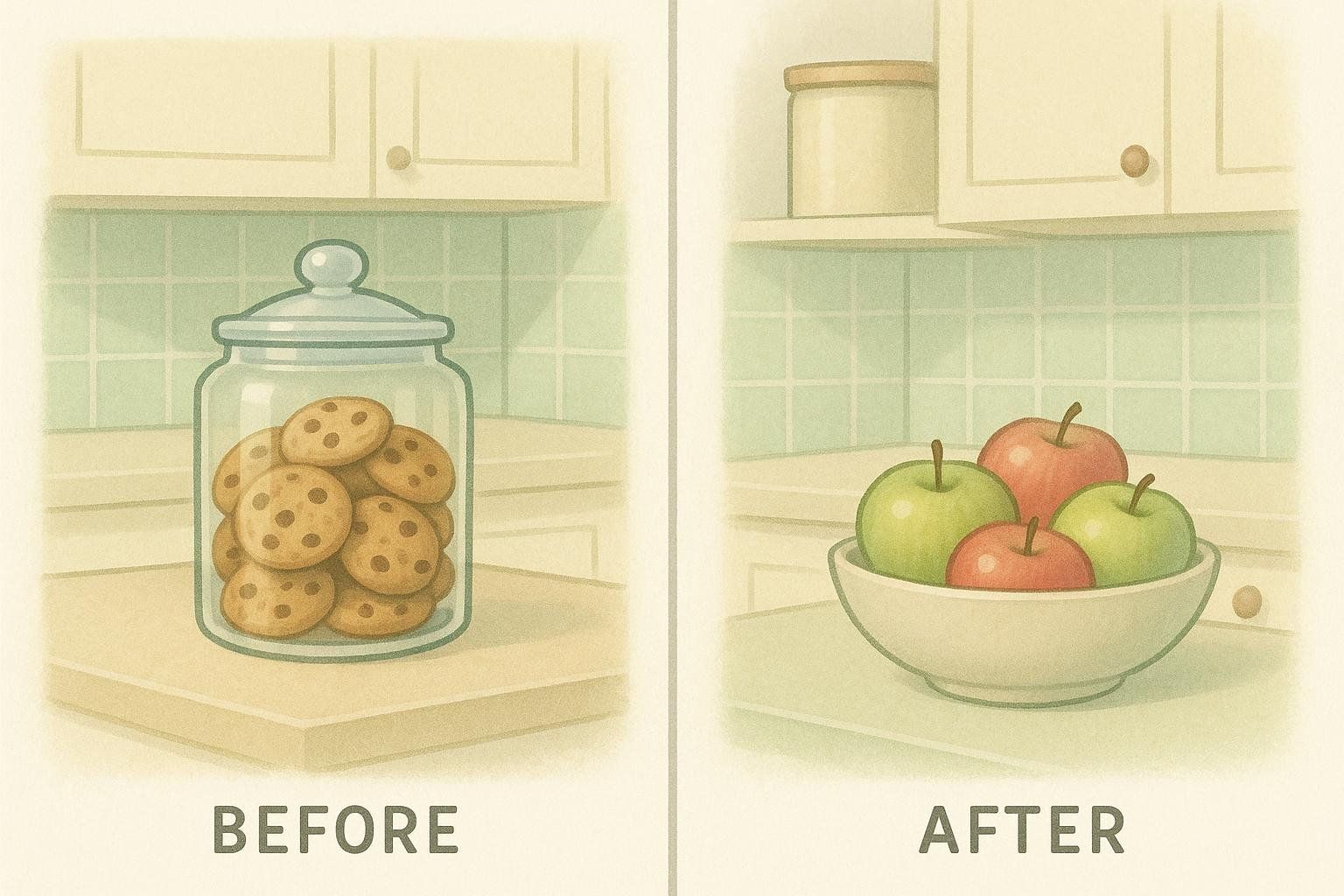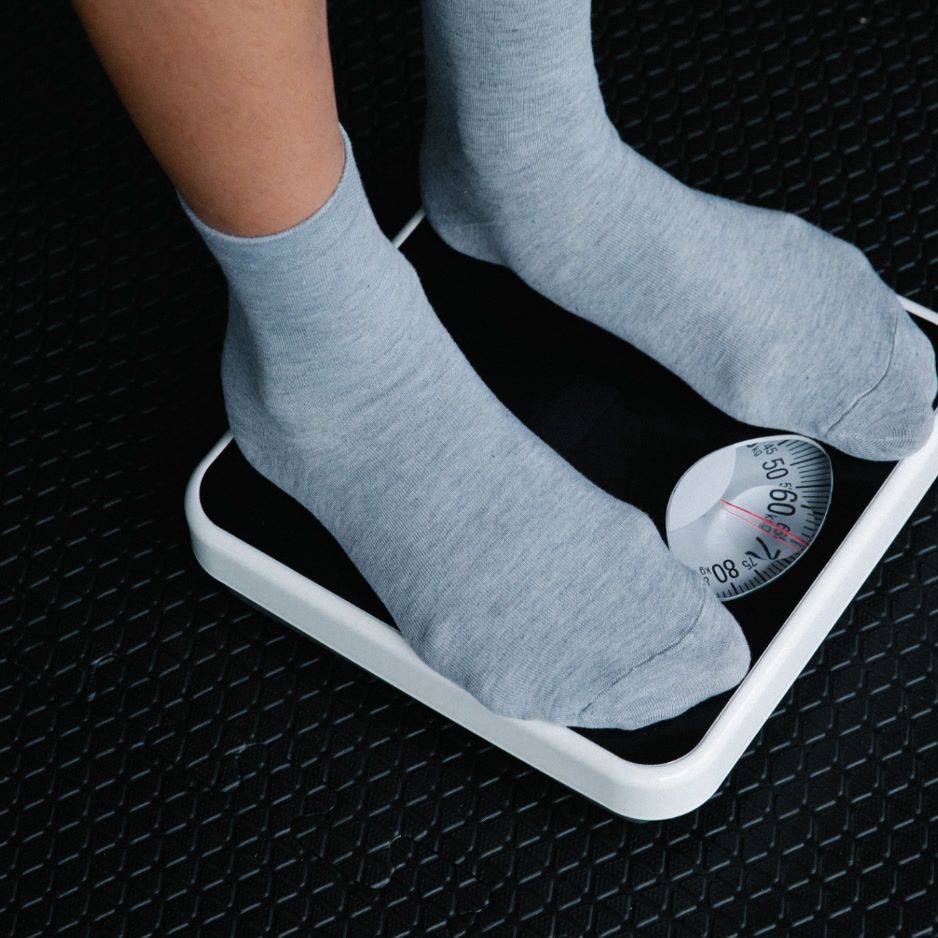30 Science-Backed Weight Loss Hacks That Actually Work

30 Science-Backed Weight Loss Hacks That Actually Work (No Gimmicks Required)
Most weight loss advice promises instant transformation through extreme measures or expensive supplements, but sustainable fat loss actually comes down to small, strategic changes backed by research. When you optimize the fundamentals—creating a moderate calorie deficit while preserving muscle mass—lasting results follow.
This comprehensive guide presents 30 evidence-based weight loss strategies that integrate seamlessly into busy lifestyles. Each strategy is grounded in peer-reviewed research and designed to compound into meaningful, lasting transformation that goes beyond quick fixes.
The Truth About Weight Loss "Hacks"
The strategies in this guide are called "hacks" not because they're shortcuts, but because they're intelligent optimizations of proven weight loss principles. Each one leverages behavioral science or physiological mechanisms to make creating and maintaining a calorie deficit more achievable and sustainable.
Studies on successful long-term weight management demonstrate that sustainable results come from creating moderate calorie deficits through improved food choices and increased activity, not dramatic restriction or elimination diets.
Strategic Eating Hacks for Sustainable Weight Loss
1. Front-Load Protein at Every Meal
Start each meal with protein to leverage its powerful thermic effect—protein requires 20-30% more energy to digest compared to carbs (5-10%) or fats (0-3%).
Practical application:
- Breakfast: Greek yogurt with berries before your oatmeal
- Lunch: Start your salad with grilled chicken or chickpeas
- Dinner: Eat your protein first, then vegetables, then starches
Target: 0.7-1.0 grams per pound of body weight daily
2. Practice the "Apple Test" for True Hunger
Before reaching for food, ask: "Would I eat an apple right now?" If not, you're likely dealing with boredom, stress, or habit—not genuine hunger.
This simple mental check helps distinguish between physical hunger and emotional eating triggers, a key skill for developing a healthier relationship with food.
3. Slow Down Your Eating Pace
Research shows eating slowly leads to greater satiety, as it takes approximately 20 minutes for your brain to register fullness signals from your stomach.
Try this: Put your fork down between bites, chew each bite 20-30 times, and engage in conversation if eating with others.
4. Use the "Plate Method" for Portion Control
Visual cues beat calorie counting for most people. Structure your plate as:
- ½ plate: Non-starchy vegetables (broccoli, spinach, peppers)
- ¼ plate: Lean protein (chicken, fish, tofu, beans)
- ¼ plate: Complex carbs (quinoa, sweet potato, brown rice)
5. Eat Vegetables First
Research on eating order shows that consuming vegetables before other foods increases fiber intake and promotes satiety, leading to naturally reduced calorie consumption.
Bonus: This hack works at restaurants too—order a side salad and eat it while waiting for your main course.
6. Practice Strategic Pre-Loading
Drink 16-20 oz of water 30 minutes before meals. Studies indicate this simple step can increase feelings of fullness and reduce calorie intake by 13%.
7. Keep Trigger Foods Hidden
Environmental cues powerfully influence eating behavior. Research shows people eat more when unhealthy foods are visible and accessible.
Kitchen makeover:
- Store healthy snacks at eye level
- Keep treats in opaque containers on high shelves
- Place a fruit bowl on your counter

8. Master the Art of Healthy Swaps
Small substitutions add up to significant calorie savings:
- Cauliflower rice → 25 calories vs. white rice → 200 calories per cup
- Greek yogurt → 90 calories vs. sour cream → 200 calories per 2 tablespoons
- Spaghetti squash → 40 calories vs. pasta → 200 calories per cup
9. Embrace Intermittent Fasting (If It Fits Your Life)
Intermittent fasting research shows it can be an effective weight loss tool, mainly because it naturally creates a calorie deficit. Popular methods include:
- 16:8 method: Eat within an 8-hour window, fast for 16 hours
- 5:2 approach: Eat normally 5 days, restrict calories 2 non-consecutive days
Important: This isn't magic—it simply helps many people control total calorie intake.
10. Plan for Weekend Indulgences
Research shows people consume approximately 181 additional calories on Saturdays compared to weekdays. Instead of "saving up" calories (which often backfires), plan one deliberate indulgence meal, but stick to your healthy eating habits for the other meals that day.
Practical Movement Hacks for Sustainable Fat Loss
11. Prioritize Walking for Sustainable Fat Loss
Studies demonstrate walking has high adherence rates compared to other forms of exercise, making it one of the most sustainable approaches to increasing daily calorie expenditure.
Progressive walking plan:
- Week 1-2: 15 minutes after meals
- Week 3-4: 30 minutes daily, including longer evening walks
- Week 5+: Aim for 10,000 steps daily

12. Add HIIT for Maximum Efficiency
A 2024 study published in Nature comparing HIIT and moderate-intensity continuous training found that HIIT participants reduced body fat percentage by 6.67% (males) and 7.85% (females), compared to 2.74% and 2.11% respectively with traditional steady-state cardio.
Beginner HIIT protocol (20 minutes):
- 5-minute warm-up
- 8 rounds: 30 seconds high intensity, 90 seconds recovery
- 5-minute cool-down
13. Turn Daily Activities into Calorie Burners
Non-exercise activity thermogenesis (NEAT) can vary by up to 2,000 calories daily between people. Maximize yours:
- Take stairs instead of elevators
- Park farther away
- Walk during phone calls
- Use a standing desk periodically
- Do household chores vigorously
14. Strength Train to Preserve Muscle
Resistance training is crucial during weight loss to preserve calorie-burning muscle tissue. Muscle burns approximately 6 calories per pound daily at rest.

Minimum effective dose: 2-3 full-body sessions weekly focusing on compound movements like squats, deadlifts, and presses.
15. Schedule Recovery Like Workouts
Poor recovery sabotages fat loss by elevating cortisol and disrupting hunger hormones. Research demonstrates quality sleep is essential for weight management through hormonal regulation and metabolic function.
Recovery essentials:
- 7-9 hours of sleep nightly
- 1-2 complete rest days weekly
- Stress management techniques like deep breathing
Lifestyle Hacks for Long-Term Success
16. Master Your Environment
Your environment shapes your choices more than willpower. Create conditions that make healthy choices easy and unhealthy ones difficult.
Home environment:
- Prep healthy snacks in visible containers
- Keep workout clothes out and ready
- Remove tempting foods or store them inconveniently
17. Use Technology Strategically
Tracking progress increases success rates, but focus on meaningful metrics beyond the scale:
- Daily steps (aim for 8,000-10,000)
- Weekly strength training sessions
- Sleep quality and duration
- Body composition changes via DEXA scans
18. Practice Strategic Meal Prep
Meal prep prevents decision fatigue and reduces reliance on convenience foods. Focus on prep shortcuts:

- Cook proteins in bulk (roast chicken, bake salmon)
- Pre-cut vegetables for easy snacking
- Prepare protein-rich overnight oats for busy mornings
19. Build a Support System
Research shows social support significantly influences eating behaviors, with people eating differently when they're with others compared to eating alone.
Strategies:
- Find an accountability partner
- Join fitness classes or walking groups
- Cook healthy meals with family or friends
20. Plan for Setbacks
Perfection isn't required—consistency is. Build flexibility into your approach:
- Use the 80/20 rule (healthy choices 80% of the time)
- Have a plan for social events and travel
- Focus on progress, not perfection
Metabolism Hacks
21. Drink Cold Water Throughout the Day
While the metabolic boost from cold water is modest, staying well-hydrated supports optimal fat oxidation and exercise performance.
Hydration strategy:
- Start each day with 16-20 oz of water
- Keep a water bottle visible at all times
- Flavor with citrus or electrolytes for variety
22. Time Your Caffeine Strategically
Research shows caffeine can increase metabolic rate by 3-11% for up to 3 hours, but timing matters for sleep quality.
Optimal approach:
- 200-400mg caffeine 30-60 minutes before workouts
- Avoid caffeine after 2 PM if it affects your sleep
- Green tea provides additional fat-burning compounds (EGCG)
23. Add Spice to Your Life
Capsaicin from chili peppers can modestly increase energy expenditure according to systematic reviews.
Although the metabolic boost is not large, spicy foods also increase satiety and may reduce overall calorie intake.
24. Don't Fear Healthy Fats
Including adequate fat (20-25% of calories) supports hormone production and satiety. Studies show unsaturated fats from sources like olive oil and avocados help regulate appetite.
Smart fat sources:
- Nuts and seeds (portion-controlled)
- Fatty fish like salmon and sardines
- Extra virgin olive oil for cooking
- Avocados in moderation
Psychological and Behavioral Hacks
25. Use Smaller Plates and Bowls
Visual perception strongly influences portion sizes. Using smaller dinnerware can reduce consumption without feeling deprived.

26. Practice Mindful Eating
Research shows mindful eating interventions are effective for weight management, helping people pay full attention to their food and eating experience, which prevents overeating and improves meal satisfaction.
Key practices:
- Eat without distractions (TV, phone, work)
- Focus on flavors, textures, and aromas
- Check in with hunger and fullness cues
27. Address Stress Eating
Chronic stress promotes abdominal fat storage through elevated cortisol levels and often leads to emotional eating.
Stress management toolkit:
- 5-minute breathing exercises between meals
- Regular short walks in nature
- Progressive muscle relaxation before bed
- Consider professional support for chronic stress
28. Optimize Your Sleep Environment
Poor sleep disrupts hormones that regulate hunger and fullness. Research shows acute sleep deprivation reduces muscle protein synthesis by 18% and negatively affects metabolic function.
Sleep optimization:
- Keep bedroom cool (65-68°F) and dark
- Consistent sleep/wake times, even on weekends
- No screens 60 minutes before bed
- Consider blackout curtains or eye mask

Advanced Strategies for Faster Results
29. Track Body Composition, Not Just Weight
The scale lies—it can't distinguish between fat loss and muscle loss. DEXA scans provide the most accurate assessment of your body composition changes, showing exactly where you're losing fat and whether you're preserving precious muscle mass.
Why this matters: Muscle tissue burns more calories at rest than fat tissue, so preserving muscle during weight loss helps maintain a higher metabolic rate.
Tracking schedule:
- Baseline DEXA scan before starting
- Follow-up scans every 8-12 weeks
- Use data to adjust nutrition and exercise plans
30. Consider Targeted Visceral Fat Reduction
Not all fat is created equal. Visceral fat—the deep abdominal fat surrounding your organs—poses the greatest health risks and responds uniquely to specific interventions.
Visceral fat-fighting strategies:
- High-intensity interval training (most effective)
- Adequate protein intake (0.7-1.0 grams per pound of body weight daily)
- Stress management and quality sleep
- Limit alcohol consumption
- Focus on whole foods over processed options
Hacks for Different Lifestyles
For Busy Professionals
Time-crunched but results-focused? These hacks integrate seamlessly into hectic schedules:
Morning routine (10 minutes):
- Pre-portioned Greek yogurt with berries
- 10-minute bodyweight circuit
- Large glass of water before coffee
Workday strategies:
- Walking meetings when possible
- Desk drawer healthy snacks (nuts, protein bars)
- Set hourly movement reminders
Evening wind-down:
- 15-minute post-dinner walk
- Meal prep for tomorrow while cooking dinner
- Stress-reducing bedtime routine
For Budget-Conscious Students
Effective weight loss doesn't require expensive supplements or gym memberships:
Budget-friendly foods:
- Dried beans and lentils (protein + fiber powerhouses)
- Frozen vegetables (just as nutritious as fresh)
- Canned fish (sardines, tuna for omega-3s)
- Oats and brown rice (sustained energy)
- Eggs (complete protein, filling)
Free/cheap activities:
- Campus gym and fitness classes
- Walking groups or hiking clubs
- Bodyweight workouts in dorm room
- Intramural sports
- Bike commuting to class
Social navigation:
- Suggest active hangouts (hiking, frisbee, walking)
- Eat before parties to avoid drunk munchies
- Choose pizza toppings wisely (extra vegetables, lean proteins)
For the Skeptical Dieter
Tired of false promises? Focus on scientifically validated approaches:
Evidence-based foundation:
- Track calories using a validated app (MyFitnessPal, Cronometer)
- Prioritize resistance training 3x weekly
- Measure progress through body composition, not just scale weight
- Focus on sustainable 1-2 lb weekly loss
Common myths to ignore:
- Detox teas and fat-burning pills
- Exotic supplements that promise miracle results
- Extreme elimination diets
Data-driven principles to trust:
- Weight fluctuations are normal—focus on trends, not daily changes
- DEXA scans provide objective data to track real progress
- Consistent tracking reveals patterns over time
Common Weight Loss Pitfalls to Avoid
The "All or Nothing" Trap
Perfectionism is the enemy of progress. Missing a workout or eating a slice of cake doesn't derail your entire effort. Successful weight loss is about consistent good choices, not flawless execution.
Extreme Calorie Restriction
Research shows very low-calorie diets often backfire by reducing metabolic rate and promoting muscle loss. Aim for moderate deficits (300-500 calories below maintenance) for sustainable results.
Neglecting Muscle Preservation
Without resistance training, up to 25% of weight loss can come from muscle, slowing your metabolism and creating a "skinny fat" appearance.
Ignoring Sleep and Stress
Poor sleep and chronic stress significantly impair fat loss through hormonal disruptions. These aren't optional—they're fundamental to success.
Your 4-Week Quick-Start Plan
Week 1: Foundation Building
- Implement 5 eating hacks (#1, #3, #5, #7, #8)
- Start walking daily (15-20 minutes)
- Track sleep quality and aim for 7-8 hours nightly
- Goal: Establish basic habits without overwhelming yourself
Week 2: Movement Integration
- Add 2 strength training sessions (bodyweight or weights)
- Increase walking to 25-30 minutes daily
- Try one HIIT session (start with 10-15 minutes)
- Implement meal prep strategies
- Goal: Build movement habits and meal structure
Week 3: Optimization
- Fine-tune portions using hunger/fullness cues
- Add stress management techniques
- Consider timing carbs around workouts
- Experiment with intermittent fasting if interested
- Goal: Optimize existing habits based on what's working
Week 4: Assessment and Planning
- Schedule a DEXA scan to assess body composition changes
- Evaluate which hacks were most sustainable
- Plan your next 4-week cycle with progressive challenges
- Goal: Measure progress objectively and plan next phase
The Bottom Line: Sustainable Beats Spectacular
The most effective weight loss "hack" is consistency with the fundamentals—not chasing the latest fad. These 30 strategies work because they:
- Create a sustainable calorie deficit through smarter food choices and increased activity
- Preserve muscle mass during weight loss to maintain metabolic rate
- Address the psychological aspects of eating and exercise adherence
- Fit into real life rather than requiring dramatic lifestyle overhauls
The magic isn't in any single hack—it's in the compound effect of multiple small improvements sustained over time.
Ready to start? Choose 3-5 hacks that resonate with your lifestyle and implement them this week. Once they become habit (usually 2-3 weeks), add more strategies.
Want to track your progress scientifically? Book a DEXA scan to measure your baseline body composition and monitor whether you're losing fat while preserving valuable muscle mass. Unlike the bathroom scale, DEXA reveals exactly where your weight loss is coming from—and that's data you can actually use to optimize your approach.
Remember: lasting transformation happens one habit at a time, not overnight. Be patient with the process, trust the science, and celebrate small wins along the way. Your future self will thank you for choosing sustainable strategies over spectacular failures.


